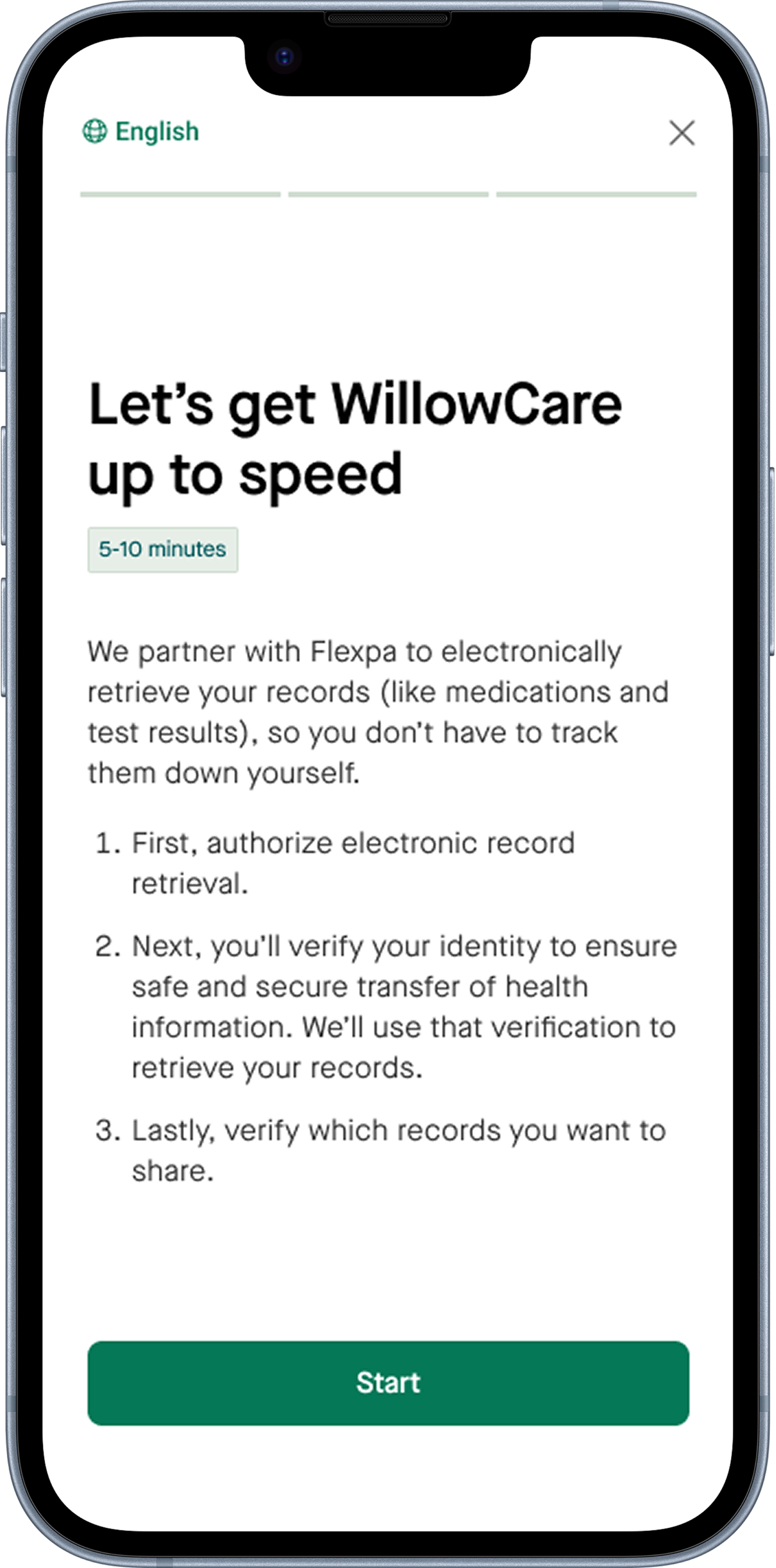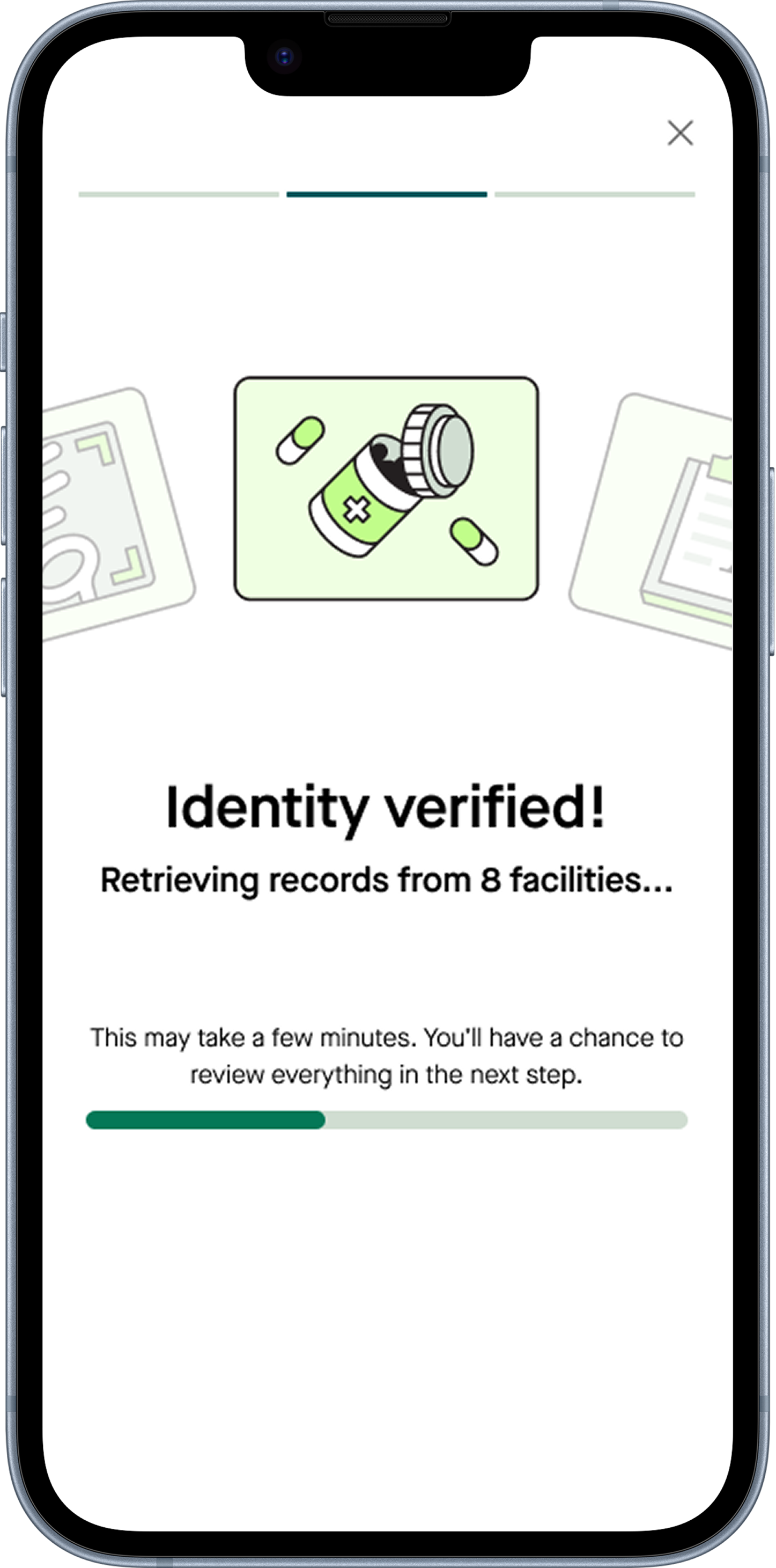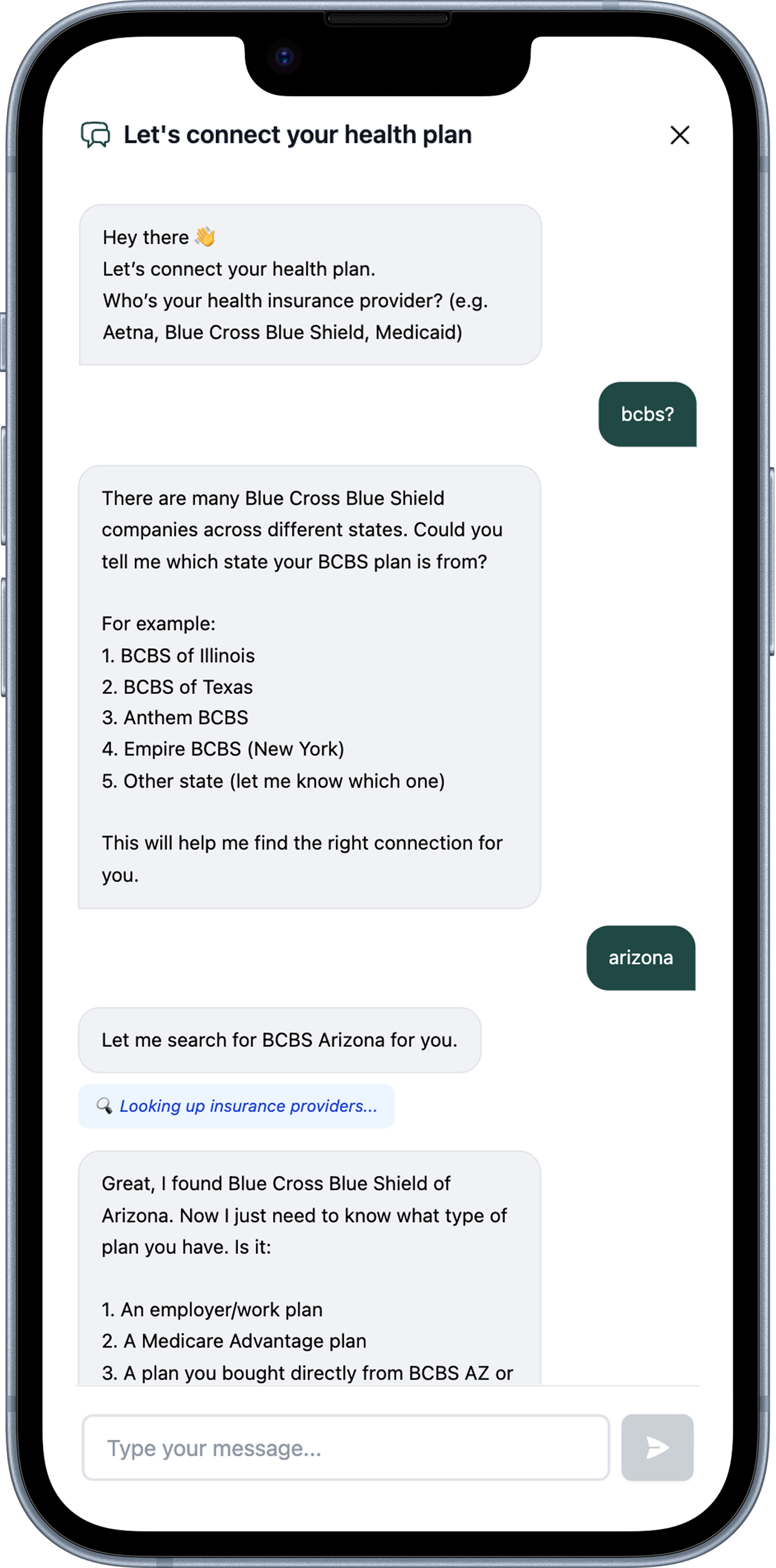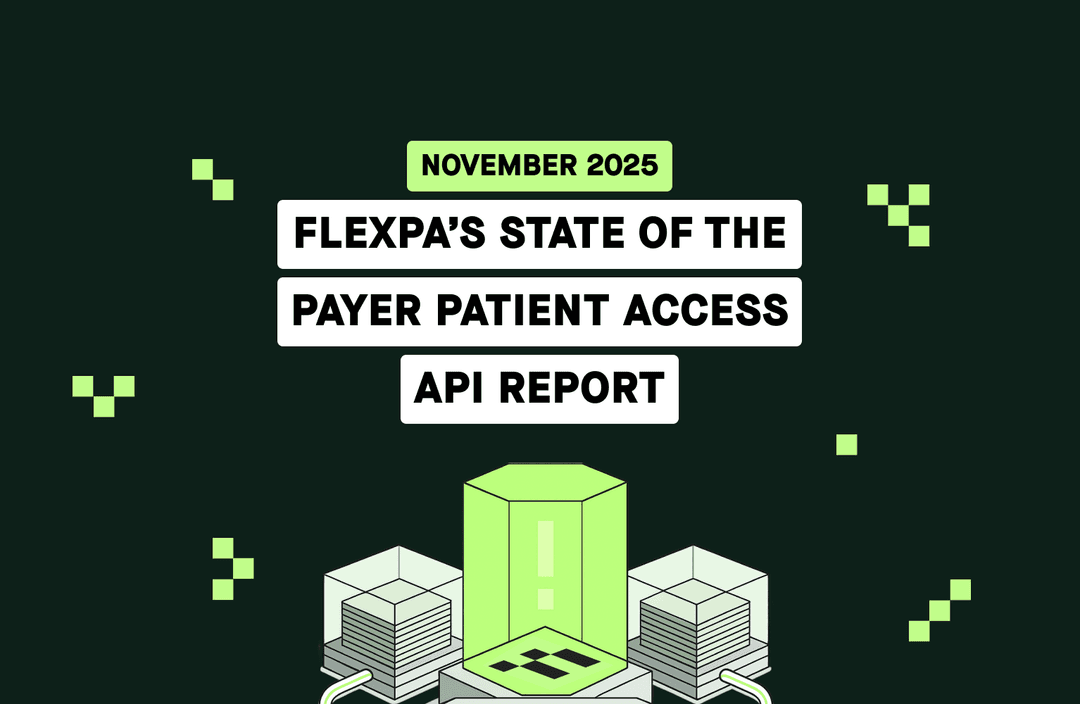Welcome to Day 3 of our Fall 2025 Launch Week! Missed Day 2? Read about Day 2's launch.
Today we're excited to share Flexpa Consent 2.0. To support new apps like Flexpal, our patient agent, and becoming a TEFCA IAS provider, we've completely re-imagined the consent process for patients.
First, Flexpa Consent now provides a unified 3-in-1 patient access experience: payer claims data via CMS-9115F, clinical records from EHRs through ONC (g)(10) Provider APIs, and nationwide record discovery via TEFCA IAS.
Second, Flexpa Consent now features intelligent agentic routing. Patients can download their records in a guided experience that matches their request with the best source and network in highly personal and dynamic ways.
Let's take a look at how it works.
The Evolution of Patient Data Access
When Flexpa launched, we focused on payer claims data through CMS-9115F Patient Access APIs.
This was never-before-available data that unlocked patient-consented access to insurance claims across every major health plan in the United States. Claims data contains valuable clinical information - diagnoses, procedures, medications dispensed - but it is only one network among several pathways for patients to download their records.
Beyond payer APIs, there are two other major API-driven pathways for records access. ONC (g)(10) Provider APIs enable direct access to clinical data from EHRs, while TEFCA IAS provides nationwide clinical record discovery across all connected health information networks.
Now, we're expanding access through TEFCA IAS for nationwide clinical record discovery, with Provider APIs as a fallback for direct EHR access when needed.
Intelligent Routing: Matching Data Source to Use Case
Patients need access to their complete health profiles that combine claims and clinical data, but they shouldn't need to understand the technical differences between TEFCA queries, payer API endpoints, or provider FHIR servers.
When patients enter our consent process, we automatically route them to the optimal data source based on the application's use case.
Different access pathways unlock different insights, and Flexpa handles the complexity of determining which pathway serves each scenario best. For example, TEFCA and provider APIs have more reliable and thorough unstructured doctor's notes for clinical context, while payer APIs include detailed claims cost information and higher signal Medications data.
Flexpa Consent handles this routing automatically based on the integration configuration of the integrating application. Patients authorize once and receive the data that matters for your application, without navigating the complexity of which API to use when.
The Consent 2.0 Experience
Flexpa Consent 2.0 represents a foundational redesign, built mobile-first with intelligent systems that hide complexity while maintaining security and speed.
Foundational Redesign
We've completely reimagined the UX with an "onboarding" philosophy that emphasizes the weight and seriousness of data sharing. This isn't a quick OAuth popup - it's a consent experience that treats health data with appropriate gravity while remaining smooth and educational.
The interface is mobile-first, not just mobile-friendly. People are busy: they're on the way to the doctor, sitting in the waiting room, or checking their phone between appointments. Flexpa Consent works where and when patients need it, with state-of-the-art security measures, end-to-end encryption, and a flow that respects both the urgency and importance of the moment.

Automatic Data Source Routing
Flexpa Consent supports all access patterns - payer, TEFCA, and Provider APIs - with intelligent routing that determines the best pathway for each connection. Patients authorize once. The system handles everything else: querying the right networks, authenticating through the appropriate identity providers, and retrieving data from the sources that best serve your application's use case.
Users never see the complexity. They don't need to know whether their data is coming from a TEFCA query across QHINs, a CMS-9115F payer endpoint, or a provider's FHIR server. They just know they're sharing their health information with an application they trust.

AI-Powered Navigation
Both payer and provider APIs have hundreds of endpoints, each with their own eligibility rules that don't match up to patients' mental models. We see this time and again as we try to direct users to the right places.
We've been building Flexpal, a patient agent, to help navigate this complexity for you. The assistant walks a user through step-by-step with natural conversational language, handles edge cases that rigid rule-based systems struggle with, checks eligibility on the backend, assists with account creation when needed, provides tailored guidance, and ultimately routes patients to the correct payer or provider and the correct API.
The chat interface obfuscates these complexities while an LLM handles ambiguous scenarios with context-aware intelligence that static routing logic can't match.

Looking Ahead
Flexpa Consent 2.0 represents our vision for patient-centered health data access: to put patients at the center of their care by connecting their healthcare data from everywhere, and helping them share it anywhere, anytime.
Learn more about the capabilities powering Flexpa Consent 2.0:
Flexpa Consent 2.0 is currently in beta testing. Want to be part of the beta program? Schedule a demo or contact us to get started.
Interested in staying updated on Flexpa's latest features and industry developments? Subscribe to our newsletter. Ready to start building? Schedule a demo to learn more.




